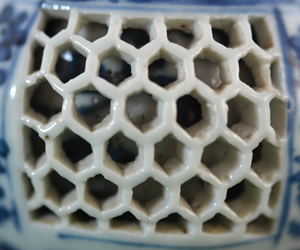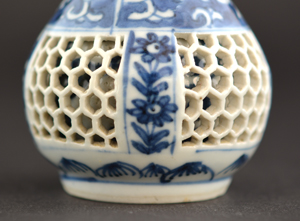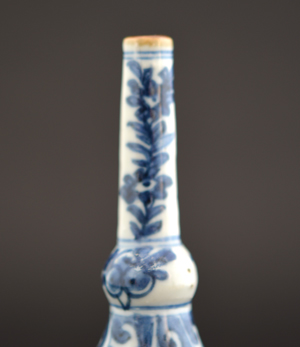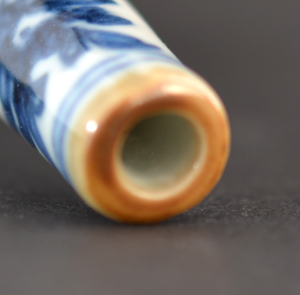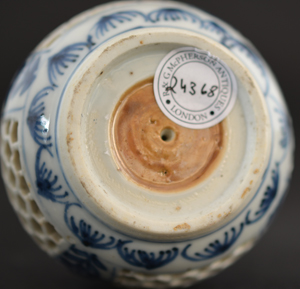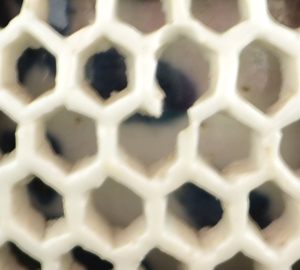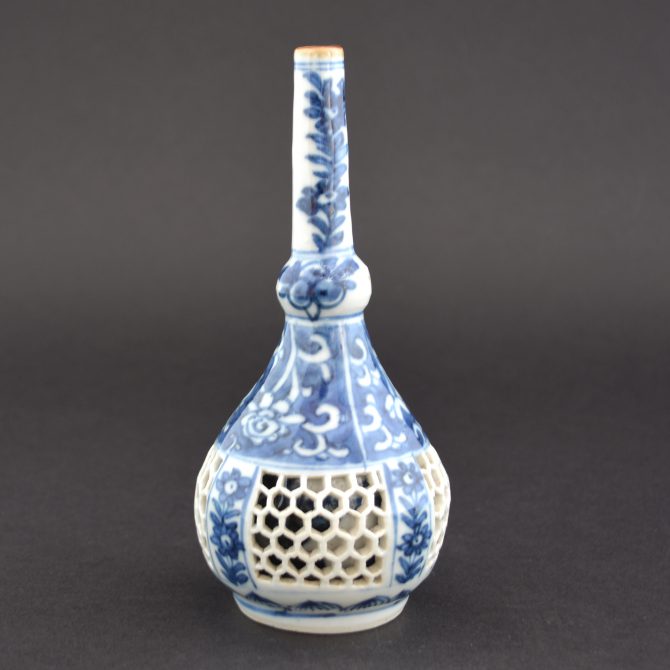
KANGXI 1662 – 1722 Chinese Export Porcelain
An Usual Kangxi Blue and White Linglong Rosewater Sprinkler c.1690-1720.
SOLD
- Condition
- In very good condition, a tiny piece of the reticulation is repaired (see the photograph of it prior to repair).
- Size
- Height : 15.1 cm (6 inches)
- Provenance
- N/A
- Stock number
- 24368
Information
Rosewater Sprinklers :
Rosewater has been used since early times. It became important in the Middles East, the containers used to contain it known as Golabdan in Persian were made from a number of materials including glass, metal and ceramic, the earliest being of frit ware. The sweet heavy perfume of the rose has long held a poetic appeal. Roses feature often in Persian poetry, sometimes evoking both sensuality and mysticism. The poet Sa`di or Saadi (1210-1292) from Shiraz in southern Iran, wrote a poetic compilation of anecdotes entitled Gulistan (`The Rose Garden`), which is a major work of Persian literature. For Mughal manuscript of Sa`di in a Rose garden, from Gulistan, painted in c.1645 see the last two photographs. There are numerous Chinese porcelain rose-water sprinklers, many of which date from the Kangxi Period (1662-1722). Although most would have been made for the Middle Eastern market many also turn up in old Dutch collections. Jorge states "Rosewater sprinklers were initially exported to Batavia where they used as such and often provided with metal mounts. They found their way to the Netherlands as curiosities and decorative items" from Chinese Porcelain in the Collection of the Rijksmuseum Amsterdam, The Ming and Qing Dynasties (Christiaan Jorg, Phillip Wilson, The Rijksmuseum, 1997) page 136.
Linglong / Reticulated Porcelain :
The present piece is an example of what can be referred to as `reticulated` porcelain, reticulated meaning having the form or appearance of a net, it was used as early the beginning of the 18th Century by the famous Père Francois Xavier d`Entrecolles (1664-1741) to describe this type of work on porcelain. Another popular term for this type of pierced or cut decoration is `Devils Work` or Guigong. However the Chinese term Linglong is gradually replacing the previous terms, helped by the publication of Jorge Welsh`s book `Linglong` (Jorge Welsh,London,2004.ISBN 972-99045-2-9). There does not seem to be any difference in the use of terms between the free standing pierced porcelain or that supported by an inner wall, nor a distinction made between the most refined work or the type with larger cut-out sections of porcelain.
